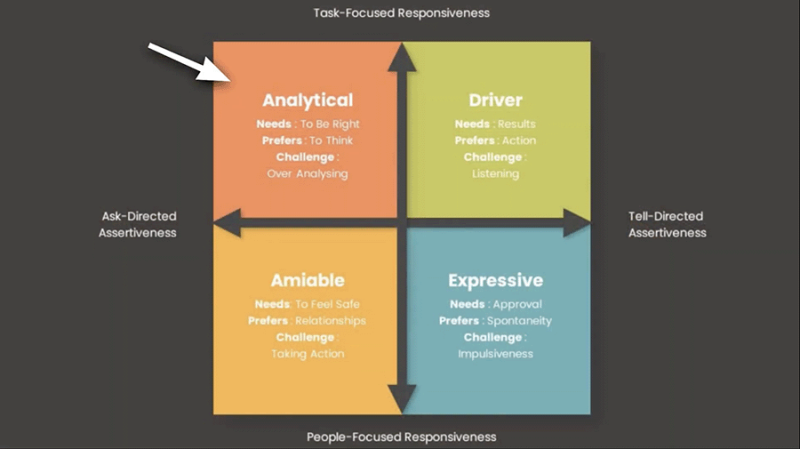Listen to the podcast above. Watch the video. Or just read the highlights below.
“One size fits all? That’s a misconception.”
Just as you have your preferred words and tones, so do your prospects. Ignoring these distinctions can lead to tension that undermines deals.
However, when you speak your customer’s language, remarkable things happen. Rapport flourishes, resistance dissipates, and you close more sales.
So, how can you become adept in the four primary styles of customer communication? Let’s delve into it.

The Analytical Customer
Analytical individuals prioritize logic and data. They meticulously dissect details before making decisions. Avoid making sweeping statements or attempting to win them over. Instead:
- Substantiate your claims with research, statistics, and expert insights.
- Offer a balanced perspective with pros/cons and a cost-benefit analysis.
- Provide them with the time and space to evaluate their options.
The Amiable Customer
Amiables value collaboration and interpersonal relationships over tasks. They avoid conflict and focus on emotional needs. To connect effectively with amiable customers:
- Pose open-ended questions and actively listen to their responses.
- Discuss how your solution fosters relationships and teamwork.
- Establish yourself as a trusted partner rather than a pushy salesperson.
The Expressive Customer
Expressives relish creativity, storytelling, and enjoyable sales conversations. They rely on intuition over strict logic and enjoy discussing ideas. When dealing with expressive clients:
- Share real-life case studies and anecdotes to breathe life into concepts.
- Compliment them on their taste or vision.
- Infuse your pitch with high energy and imagination.
The Driver Customer
Drivers focus intently on results, efficiency, and concrete goals. They make swift decisions and take control of conversations. When selling to drivers:
- Get straight to the point.
- Provide concise data on ROI and measurable metrics.
- Demonstrate how your solution saves them time and money.
- Allow them to steer and lead the discussion.
Start Speaking Their Language
The initial step is identifying your prospect’s communication style. Then, adapt your tone, stories, and the entire conversation to align with their preferences. With practice, you can become proficient in all communication styles and witness a surge in your sales.
Remember, adaptability is the key to forging connections. Now, go out there and communicate in your customers’ language!
- AI Won’t Take Your Job (But Someone Using It Will) - November 3, 2025
- I Think I Swallowed An Elephant – The Author’s Story - October 14, 2025
- The Hard Truth About Workplace Performance Standards - October 6, 2025
